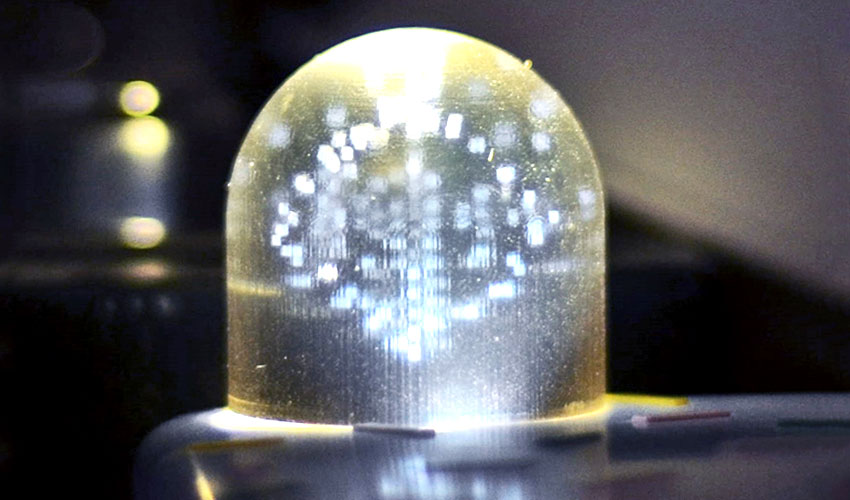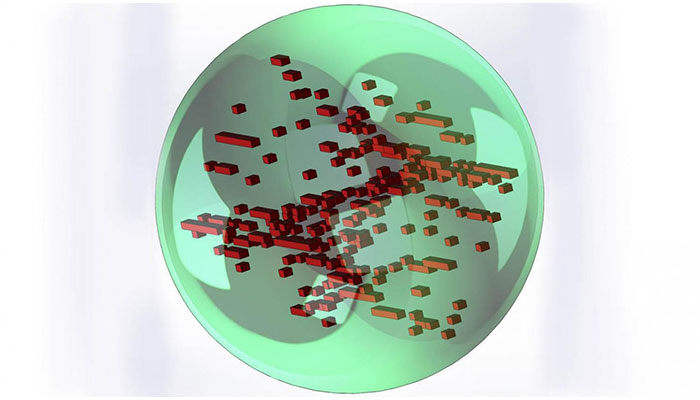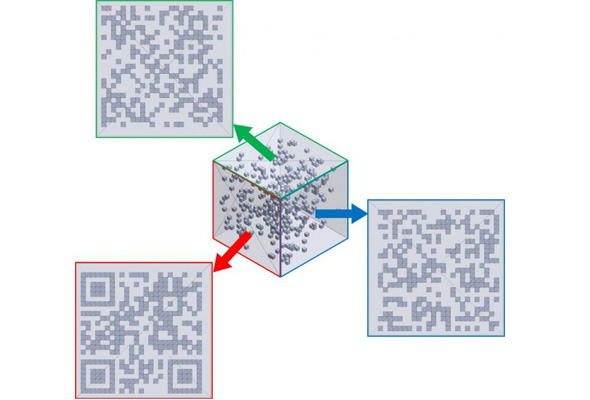QR codes to avoid piracy in 3D printing

Currently anyone with the necessary knowledge of 3D printing could reproduce almost anything. In relation to this, intellectual property in additive manufacturing is an issue that worries more and more within the industry. Companies like Disney have released patents to attack piracy in 3D printing and prevent the reproduction of their products. To protect the research models of the New York University, based in Tandon and Abu Dhabi, they developed QR codes to avoid duplication.
The new method developed by the researchers consists of the introduction of QR codes within the models. It would be almost invisible to the counterfeiters but would be identifiable by a reader. There for it would be able to confirm the legitimacy of the 3D printed piece.

Credits: NYU Tandon School of Engineering
Nikhil Gupta is an associate professor of mechanical engineering and part of the project on piracy in 3D printing. He explained, “To create typical QR code contrasts that are readable to a scanner you have to embed the equivalent of empty spaces” and continues “But by dispersing these tiny flaws over many layers we were able to keep the part’s strength well within acceptable limits.“
Industries such as aerospace or aeronautics are increasingly using additive manufacturing technologies to develop their parts. Looking back to just 2017 3D metal printing created 80% according to the Wohlers Report. Companies like Identify3D are focusing on the protection of models within these industries.
Is it possible to avoid piracy in 3D printing?
In what most experts agree is that as the market is growing, piracy in 3D printing is also growing. As has happened with the arrival of technologies such as the internet to our lives. And what is sought is to avoid the duplication of key pieces in certain developments.
But cheating the counterfeiters is a difficult task. The team tested different configurations. From the distribution of a code in only three layers of the object, to the fragmentation of the code in up to 500 small elements. It was done in thermoplastics, photopolymers and metal alloys, with several printing technologies commonly used in the industry.

Credits: NYU Tandon School of Engineering
“By converting a relatively simple two-dimensional tag into a complex 3D feature comprising hundreds of tiny elements dispersed within the printed component, we are able to create many ‘false faces,’ which lets us hide the correct QR code from anyone who doesn’t know where to look,” Gupta states.
After successfully testing their developments in different 3D models, it remained to be defined for which sectors their technology is interesting. Gupta concludes, “It must be profitable and match the solution with the level of threat … Our innovation is especially useful for sophisticated and high-risk sectors such as biomedical and aerospace , in which the quality of the smallest part is fundamental,”
What do you think about the use of QR codes to avoid piracy in 3D printing? Let us know what you think in a comment below or on our Facebook and Twitter pages! Don’t forget to sign up for our free weekly Newsletter, with all the latest news in 3D printing delivered straight to your inbox!







